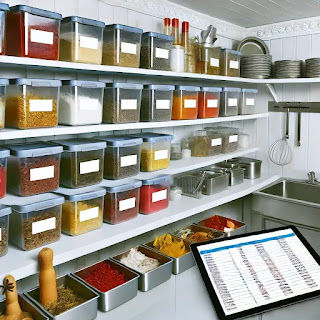Search This Blog
Dine to Success is your go-to resource for mastering the art of restaurant management. Whether you're a seasoned restaurant owner or just starting out, our blog provides actionable strategies and insights to help you boost efficiency, manage costs, motivate your team, and enhance customer experience.
Featured
- Get link
- X
- Other Apps
The Ultimate Guide to Creating a Winning Restaurant Business Plan: From Concept to Success
In the competitive restaurant industry, your business plan is your recipe for success. Whether you're an experienced restaurateur or starting your first venture, here's a guide to help you craft a plan that will both attract investors and act as a roadmap for your journey.
Why a Solid Restaurant Business Plan is Crucial
A comprehensive business plan is not just a tool for securing financing. It's a blueprint that helps you:
- Define your concept and vision
- Recognize potential challenges and opportunities
- Set realistic financial goals
- Build relationships with investors and partners
- Guide decision-making as your business expands
As famous chef Gordon Ramsay says: "Passion for food is not enough to have a restaurant. It’s about understanding the business side."
Key Components of a Winning Restaurant Business Plan
Executive Summary: The "appetizer" of your business plan. It should entice potential investors with a clear overview of your restaurant. Include:
- Mission statement
- A brief description of your concept and cuisine
- Target market overview
- Financial highlights and projections
- Key team members and their expertise
Company Description: Dig into the details about your restaurant, including:
- Restaurant name and proposed location
- Legal structure (e.g., LLC, S-Corporation)
- Ownership details and management team
- Restaurant type (casual, fine dining, etc.)
- Unique selling points (USPs)
What sets your restaurant apart? Are you introducing a new cuisine to the area, focusing on farm-to-table ingredients, or offering a distinctive dining experience?
Market Analysis: Show your understanding of the local market by:
- Describing the local economy and dining trends
- Identifying competitors and analyzing their strengths and weaknesses
- Explaining how your restaurant fills a market gap
- Using data from sources like the National Restaurant Association to support your analysis
Menu and Concept: Your menu is the heart of your restaurant. Provide:
- A sample menu with pricing
- A description of your cuisine and signature dishes
- Details about your service style and atmosphere
Make sure your menu aligns with your concept and target market.
Marketing and Sales Strategy: Outline how you'll attract and retain customers:
- Pre-opening marketing tactics
- Ongoing marketing and advertising efforts
- Social media and digital marketing strategies
- Customer retention and loyalty programs
- Potential partnerships or collaborations
Operations Plan: Detail the day-to-day running of your restaurant, including:
- Staffing structure and hiring plans
- Training and management procedures
- Customer service policies
- Suppliers and inventory management
- Technology and systems (POS, reservation software)
Management Team: Introduce the key players, highlighting their experience and qualifications, and explaining each member's role. A strong team can make all the difference in your restaurant's success.
Financial Projections: Provide a thorough financial outlook, including:
- Startup costs and investment requirements
- Projected profit and loss statements (3-5 years)
- Break-even analysis
- Cash flow projections
- Funding requirements and sources
Work with an experienced accountant to ensure your projections are realistic.
Case Studies: Learning from Successful Restaurants
Sweetgreen: Sweetgreen's focus on locally-sourced, healthy ingredients and tech-enabled ordering helped them grow to over 100 locations. Their well-defined concept attracted both investors and customers.
Shake Shack: Starting as a hot dog cart, Danny Meyer's Shake Shack grew into a global brand through a focus on quality ingredients, excellent customer service, and strategic growth planning.
Tips for Crafting Your Restaurant Business Plan
- Set realistic financial projections
- Research your target market and competition thoroughly
- Clearly articulate your unique selling proposition
- Highlight your team’s experience
- Use visuals, charts, and images to engage readers
- Keep your language clear and concise
- Have someone with restaurant experience review your plan
- Update your plan regularly as your business evolves
Resources for Restaurant Business Planning
- U.S. Small Business Administration's Business Plan Guide
- SCORE’s Restaurant Business Plan Template
- National Restaurant Association’s Industry Research
- OpenTable’s guide to writing a restaurant business plan
A well-prepared business plan not only impresses investors but also creates a clear roadmap for the success of your restaurant. Take time to research thoroughly and carefully craft each section.
For more in-depth guidance on creating a winning restaurant business plan, check out my comprehensive book: "The Ultimate Restaurant Success Handbook: Scaling, Managing, and Sustaining Long-Term Growth." available on Amazon: https://www.amazon.com/dp/B0DJQDVC12
This resource provides step-by-step instructions, real-world examples, and expert insights to help you create a business plan that sets your restaurant up for success. Don't start your culinary journey without it!
- Get link
- X
- Other Apps
Popular Posts
10 Proven Strategies for Efficient Stock Reordering and Waste Prevention in 2024
- Get link
- X
- Other Apps
10 Essential Tips for Managing Restaurant Inventory Efficiently
- Get link
- X
- Other Apps


Comments
Post a Comment